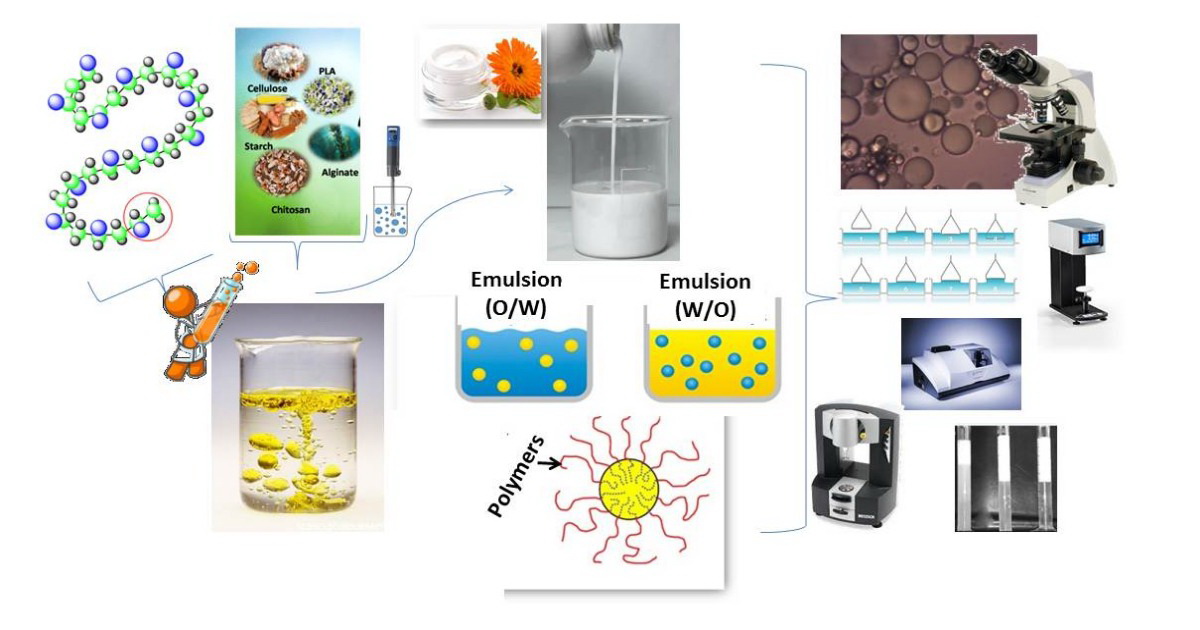- 2.8Impact Factor
- 5.5CiteScore
- 16 daysTime to First Decision
Advances in Interactions of Polymers in Emulsion Systems
This special issue belongs to the section “Chemical Processes and Systems“.
Special Issue Information
Dear Colleagues,
Emulsions are thermodynamically metastable systems, and therefore, the main challenge for emulsion production is to control the system’s stability, as well as to provide protection against destabilization. The field of polymer interactions has attracted a lot of attention both from theoretical and practical points of view. Under specific conditions (such as the polymer-to-polymer ratio, pH, ionic strength, temperature, and mixing processes), it has been stated that polymer–polymer or polymer–surfactant complexes may form with enhanced functional properties in comparison to the polymer and surfactant alone. Therefore, the effects of polymer interactions are useful in practice to achieve emulsification. Although the subject has been studied over several decades, limited knowledge on the application of polymer/surfactant or polymer/polymer mixtures in the chemical, food, and pharmaceutical industries determines the need for further extensive research. There is growing interest in better understanding and reviewing the properties of different polymer–polymer pairs with particular attention to the capability of their mixtures to emulsify. Natural polymers have advantages over synthetic polymers in terms of safety, biodegradability, and biocompatibility and, as such, are considered to be the preferred materials used for emulsion-type products in the pharmaceutical, cosmetic, and food industries.
This Special Issue, “Advances in Interactions of Polymers in Emulsion Systems”, aims to highlight the current progress in polymer interactions (for polymer–polymer or polymer–surfactant complexes) in emulsion systems. Preference will be given to non-toxic, biodegradable polymers that, when applied to any field in the industry, can enhance and preserve production. We welcome original research articles and reviews for submission. Topics include, but are not limited to, the following:
- Current trends in the application of polymers in emulsion systems;
- Emulsion systems stabilized by polymers for cosmetic, pharmaceutical, and food applications;
- Interfacial properties of polymer–polymer and polymer–surfactant interactions in the liquid system;
- The interaction of plant biopolymers in emulsions;
- The interaction of animal biopolymers in emulsions.
We look forward to receiving your contributions.
Dr. Jelena Milinković Budinčić
Prof. Dr. Ljiljana Đekić
Prof. Dr. Lidija B. Petrović
Guest Editors
Manuscript Submission Information
Manuscripts should be submitted online at www.mdpi.com by registering and logging in to this website. Once you are registered, click here to go to the submission form. Manuscripts can be submitted until the deadline. All submissions that pass pre-check are peer-reviewed. Accepted papers will be published continuously in the journal (as soon as accepted) and will be listed together on the special issue website. Research articles, review articles as well as short communications are invited. For planned papers, a title and short abstract (about 250 words) can be sent to the Editorial Office for assessment.
Submitted manuscripts should not have been published previously, nor be under consideration for publication elsewhere (except conference proceedings papers). All manuscripts are thoroughly refereed through a single-blind peer-review process. A guide for authors and other relevant information for submission of manuscripts is available on the Instructions for Authors page. Processes is an international peer-reviewed open access monthly journal published by MDPI.
Please visit the Instructions for Authors page before submitting a manuscript. The Article Processing Charge (APC) for publication in this open access journal is 2400 CHF (Swiss Francs). Submitted papers should be well formatted and use good English. Authors may use MDPI's English editing service prior to publication or during author revisions.
Keywords
- polymer–surfactant interactions
- polymer–polymer interactions
- emulsions
- adsorption on the interface
- polymers
- biopolymers
- disperse systems
- interfacial properties

Benefits of Publishing in a Special Issue
- Ease of navigation: Grouping papers by topic helps scholars navigate broad scope journals more efficiently.
- Greater discoverability: Special Issues support the reach and impact of scientific research. Articles in Special Issues are more discoverable and cited more frequently.
- Expansion of research network: Special Issues facilitate connections among authors, fostering scientific collaborations.
- External promotion: Articles in Special Issues are often promoted through the journal's social media, increasing their visibility.
- e-Book format: Special Issues with more than 10 articles can be published as dedicated e-books, ensuring wide and rapid dissemination.

